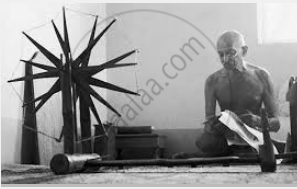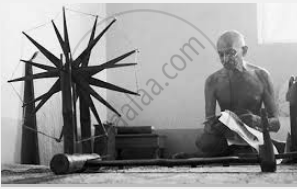Advertisements
Advertisements
प्रश्न
With reference to Gandhiji, discuss his views on the following issue:
Truth and non-violence.
उत्तर
- Satyagraha is a combination of two Sanskrit words-Satya (truth) and agraha (eagerness). Satyagraha is based on the twin principles of truth and non-violence.
- A satyagrahi was one who firmly believed in truth and nonviolence and who would resist evil at all costs. A satyagrahi was peaceful, fearless, and strong.
- He/She would hate evil but not the ‘evildoer’. In the fight for justice and truth, the satyagrahi would willingly accept suffering and be ready to make sacrifices.
- The suffering and patience of the satyagrahi were expected to bring about a change of heart in the enemy. The idea behind satyagraha was not to destroy the enemy but the transform and enlighten him.
- Gandhiji insisted on non-violent methods of struggle. He believed that non-violence was the weapon of the strong and could be effectively used to resist armed attacks by the enemy. A satyagrahi was expected to follow peaceful methods even under extreme provocation.
संबंधित प्रश्न
Fill in the blank:
Gandhi spent about 22 years in _____________ as a practicing lawyer.
Fill in the blank:
After the British brutalities in Amritsar, Gandhiji declared that it would be a sin to co-operate with the __________ government.
State whether the following is true or false:
Gandhiji did not have faith in the capacity of the common masses.
Choose the correct answer:
The Cripps Mission was sent to India in 1942 when the British empire was under the threat of a___________
State whether the following is true or false:
Independence Day was celebrated on 26 January in 1930.
State whether the following is true or false:
The INA, with the help of the Japanese, liberated Imphal and Kohima in 1944.
Answer the following question briefly
With reference to Gandhiji, discuss his views on the following issues: Hindu-Muslim unity
Answer the following question briefly
With reference to Gandhiji, discuss his views on the following issues: Social justice
This is the picture of an Indian leader who was known as the ‘Father of the Nation’,

What method did Mahatma Gandhi use in the Indian struggle for freedom?
This is the picture of an Indian leader who was known as the ‘Father of the Nation’,

Mention the features of his non-violent struggle against the British.
